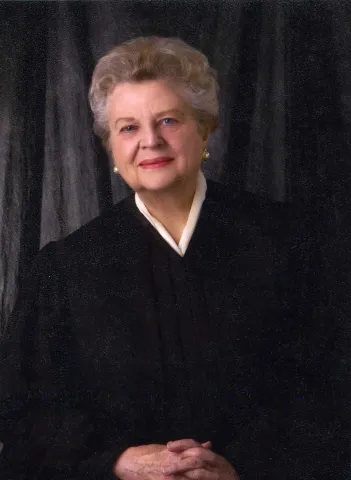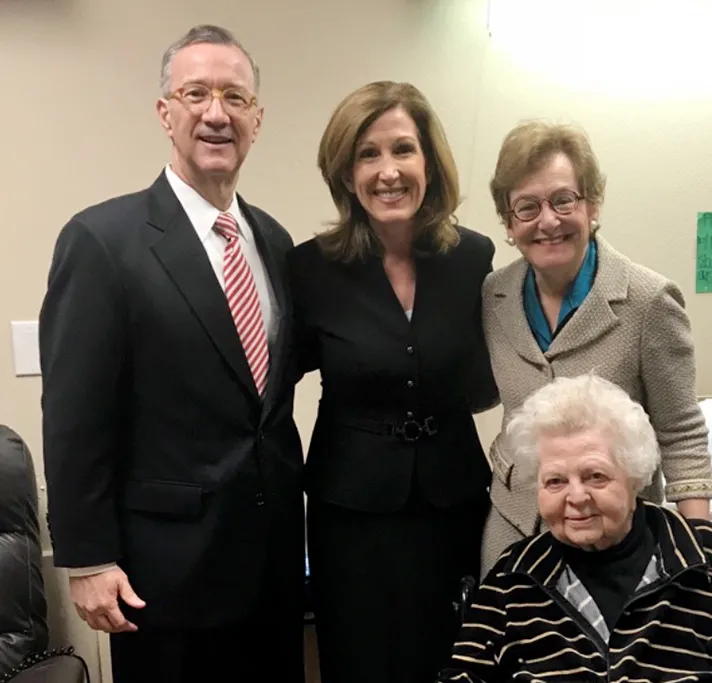
U.S. District Judge Mary Lou Robinson, Northern District of Texas.
U.S. District Judge Mary Lou Robinson, who grew up during the Dust Bowl and Depression in Texas, attended law school as one of a half-dozen female classmates more than a half century ago, and later had a federal courthouse named in her honor, died Jan. 26 at the age of 92. She was remembered by her colleagues as “an inspiration,” a “trailblazer,” and a “model judge.”
"Judge Mary Lou Robinson was an inspiration to jurists throughout the country, particularly to women who used her fine example as a motivation to seek judicial office,” said Chief Judge Barbara M.G. Lynn, of the Northern District of Texas. “All citizens of Texas, indeed of our nation, owe her an immeasurable debt for her state and federal service, which spanned more than 60 years.”
"Judge Robinson is not only a trailblazer in the truest sense of the word, but a model judge,” said former Chief Judge Sidney A. Fitzwater. “When she donned her robe and entered the courtroom, it was to do justice: with wisdom, patience, and often courage.”
According to a 2006 oral history interview, Robinson wrote in seventh grade that she wanted to be a lawyer. Noting that her father, a telegraph operator, and her mother had not attended college, she said, “It was kind of out of the blue.” But she remembered her anguish when an elementary school classmate, a Jehovah’s Witness, was expelled for refusing to say the Pledge of Allegiance. “I think things were not always fair, and I saw the law as being a way to have an impact on the system.”
After graduating from the University of Texas law school, she moved back to her home town of Amarillo in 1950, with her husband A.J., whom she met in law school, and then became a county court-at-law judge in 1955. Ironically, under state law, women were still not permitted to serve on Texas juries or sign contracts under their own names.
“I couldn't buy an automobile because I couldn't sign the note,” Robinson recalled. “At the same time, I was trying lawsuits that involved millions of dollars.”
In 1960, she became a state district judge and eventually was the first woman to serve on a Texas appellate court. In 1979, President Carter named her to the federal bench.
“Judge Robinson did not need a lifetime appointment to be independent,” said Clinton Averitte, a longtime magistrate judge in Amarillo. “She was going to make the decision that needed to be made and let the chips fall where they may.”

The federal courthouse in Amarillo, Texas, was formally named after Judge Robinson, right, in a November 2018 dedication ceremony. She posed that day with, from left, former Chief Judge Sidney A. Fitzwater, Clerk of Court Karen Mitchell, and current Chief Judge Barbara M.G. Lynn.
In 2018, the same year Robinson went on inactive senior status, legislation was enacted to rename the Amarillo federal building where she served, as the J. Marvin Jones Federal Building and Mary Lou Robinson United States Courthouse.
According to colleagues, Robinson acknowledged some pressure being a young female pioneer in a male-dominated profession, saying, "If I really fouled up, it wasn't Mary Lou that fouled up. It was women who couldn't do the job."
But in her 2006 oral history interview, which is preserved in the Fifth Circuit Library in New Orleans, Robinson was matter of fact about the challenges she faced.
“Over the years people say…what problems did you face here, partly because of being a woman or partly being such a young judge,” Robinson recalled. “My answer is: well, you know, I was just having a really good time. And I think I still am.”
Subscribe to News Updates
Subscribe to be notified when the news section is updated.
